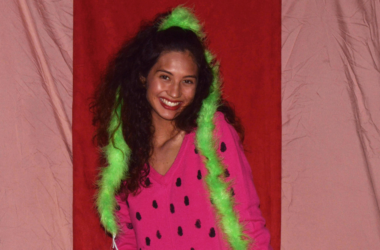The word Halloween is synonymous with the month of October, as many prepare in excitement for the last day of the month with highly creative costumes, spine-chilling front lawn displays and marathons of the spookiest films.
But while modern-day Halloween is filled with trick-or-treating and late-night monster bashes, the holiday has a rich history dating as far back as 2,000 years ago.
The most significant of the four quarterly fire festivals, Samhain, was a pagan holiday celebrated by the Celtics to welcome the fall harvest. The name translates to “summer’s end” in Gaelic.
They believed that on the night before their new year, the spiritual boundary between the world of the living and the dead became blurred, allowing the ghosts of the dead to walk the earth.
The idea of wearing costumes was not originally meant for creativity or fun. To anticipate the crossing over of ancestors, the Celts would often dress as animals and monsters so fairies were not tempted to kidnap them.
Costumes became more popular with the Scottish and Irish when younger people began to participate in a tradition called guising, where they would dress up in costume while receiving gifts from various households.
Trick-or-treat was not a term during the early history of Samhain.
Known as “souling,” impoverished people would visit the houses of the rich and receive pastries called soul cakes in exchange for a promise to pray for the souls of the homeowners’ dead relatives. The practice would later grow to the tradition of children going from door to door to ask for gifts such as food, money and ale.
Americans revived the centuries-old practice of souling and guising during the early 20th century, when many Scottish and Irish communities fled to the United States as a result of the Irish Potato Famine.
The term trick-or-treat did not become established in the United States until 1951, when it was depicted in Charles Schultz’s Peanuts comic strip. Disney would later produce a cartoon called “Trick or Treat” in 1952 starring Donald Duck and his three nephews, Huey, Dewey and Louie.
Pumpkins were not originally used when people carved out jack-o’-lanterns. Originally, carved turnips were vegetables used by the Celtics that were attached by strings to sticks and embedded with coal.
The Irish would later transition to pumpkins, which became popular during the 1920s and remains the staple for all jack-o’-lanterns.
Eventually, after the Great Depression and World War II, parents were encouraged to take out the frightening and grotesque elements of Halloween, as many communities began to use Halloween as a day for community and neighborly get-togethers.
Today, nearly 148 million Americans celebrate the holiday yearly. Although it may look much different than it once did, Halloween still remains an usher into the fall season.




